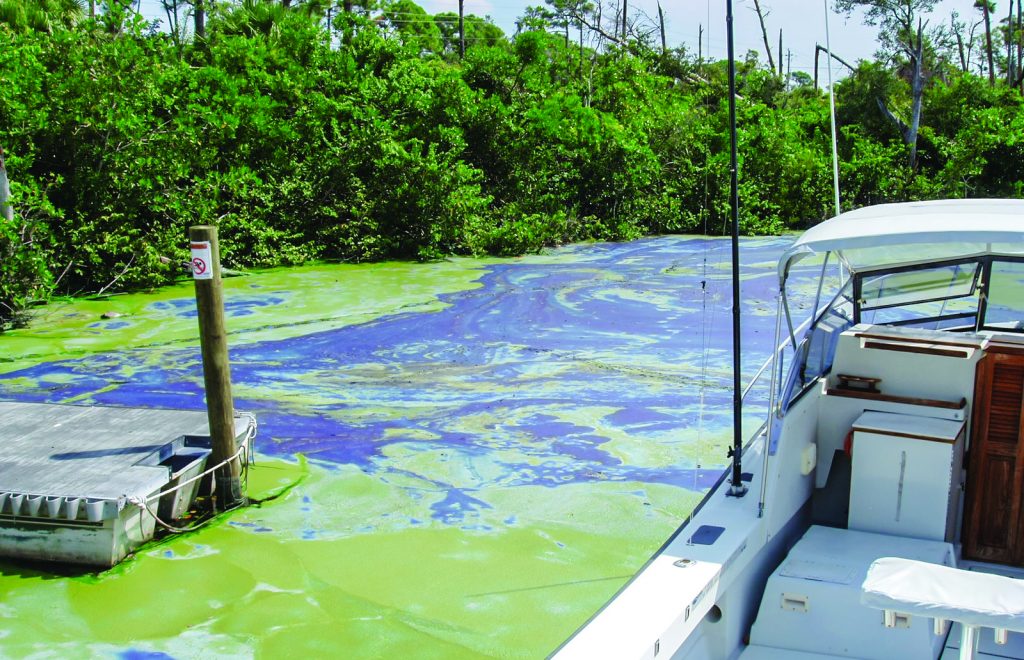April 01, 2018
By Florida Sportsman Editor

The Everglades Agricultural Area Reservoir plan, born out of Senate Bill 10, looked like the one we'd been waiting for all these years. No more Toxic Summers. No more guacamole algae and disease spread along the coasts by Lake Okeechobee discharges.
Built right, a dynamic reservoir could cut the discharges, send clean fresh water to Florida Bay, and rebuild three extraordinary fisheries and the lifestyles and economies they once supported. We all cheered.
As it now stands, the plan is not what was envisioned. In February, Everglades Foundation scientists published an evaluation of the SFWMD proposal for the EAA Reservoir that echoed what the Department of Interior suggested on an official agency call last fall: The reservoir needs more land for treatment to deliver the benefits promised by the SFWMD. But even those promised benefits , based on the state's suspiciously optimistic projections, offer too little relief to the St. Lucie and Caloosahatchee, too little fresh water to Florida Bay, and too little pollution cleanup for the Everglades.
It's heartbreaking to watch this happen.
With another 6,500 acres of filter marshes, scientists say the plan could work. We have that. The state of Florida owns enough land to make the difference, but our elected officials allowed—or even encouraged—the plan's authors to hamstring it.
Why would Florida pass up a chance to restore these world-class inshore waters, the heart of our $9.7 billion fishing industry? The same reason as last time and all the others before: politics. Our water system is working exactly the way the sugar industry wants it, and as the biggest political influence in Florida, sugar gets what sugar wants. Once again our politicians played on our hopes, pledged to bring back our estuaries and protect them, and then offered us another weak, sugar-approved compromise with the usual “take it or leave it.”
Getting SB10 and the EAA reservoir right wouldn't have cost the sugar industry much at all. Reestablishing the miles and miles of grass meadows in the southern Indian River Lagoon, in Pine Island Sound, and across Florida Bay wouldn't have taken an acre of sugarcane out of production. Neither sugar nor state agencies cared enough about the coasts to give this plan a real chance, though.
Now we're all expected to support the reservoir, just like we were expected to support CERP and CEP and Acceler8 and all the other compromises that ended up failing us. Once again, the people we elected are making excuses, assuring us it's the best deal we can get.
What would happen if we stood up to them and demanded a real solution? Like a plan that doesn't leave waterside communities exposed to higher risks of cancer and liver failure and neurological disease, or waste nearly $2 billion of taxpayers' money doing as little as possible to defend public resources.
What if we told the politicians, if you want the support of the fishing community, find a way to make this project work?
The pollution must end. The degradation, surely, must end.
The community cannot tolerate watching a few make egregious profits while the general public suffers. The estuaries are swamped with some 700 billion gallons of tainted runoff from inland last year. Proposed solutions by the establishment would address about one fifth of the problem.
Let's stop the delays and subterfuges, and build a flowway that truly sends the water south.
In late January, I fell and broke my back, had a heart attack along with surgical procedures on my heart and bladder. And with all that I'm still in better shape, with better prospects for the future, than our assaulted estuaries. I'm going to be okay; save your thoughts and well wishes for me, but if you would take a minute to make a call or write a letter demanding that we stop the toxic discharges to our estuaries that'll be all the occupational therapy I'll need
First Published Florida Sportsman Magazine April 2018
